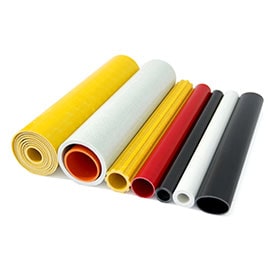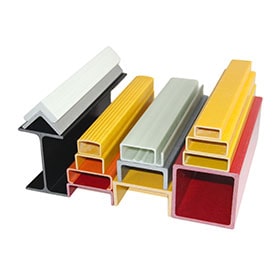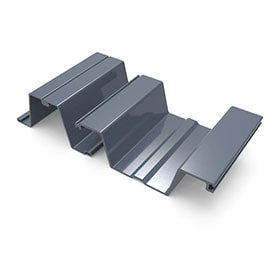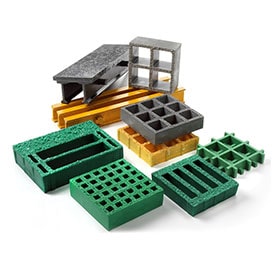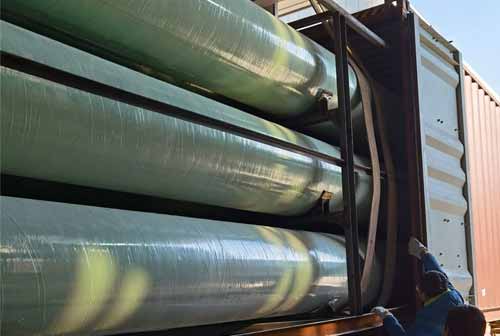
FRP and GRP are two types of composite materials that are widely used in various industries. FRP stands for fiber-reinforced polymer, while GRP stands for glass-reinforced plastic. Both materials consist of a polymer matrix that is reinforced by fibers, which provide strength and stiffness to the composite. However, there are some differences between FRP and GRP in terms of their properties, applications, and advantages.
Properties of FRP and GRP
The main difference between FRP and GRP is the type of fiber that is used to reinforce the polymer matrix. FRP can use various types of fibers, such as carbon, aramid, basalt, or natural fibers. These fibers have different characteristics, such as high tensile strength, high modulus, high temperature resistance, or low density. The choice of fiber depends on the desired performance and cost of the composite material.
GRP, on the other hand, uses only glass fibers as the reinforcement. Glass fibers are the most common and cheapest type of fiber available for composite materials. Glass fibers have moderate strength and stiffness, good corrosion resistance, and good electrical insulation. However, glass fibers also have some drawbacks, such as low impact resistance, low fatigue resistance, and high brittleness.
Another difference between FRP and GRP is the type of polymer matrix that is used to bind the fibers together. FRP can use various types of polymers, such as thermosets or thermoplastics. Thermosets are polymers that undergo a chemical reaction when heated and cured, forming a rigid and cross-linked structure. Thermoplastics are polymers that can be melted and reshaped when heated, allowing for recycling and reprocessing. The choice of polymer depends on the desired properties and processing methods of the composite material.
GRP usually uses thermoset polymers as the matrix, such as epoxy, polyester, or vinyl ester. These polymers have good adhesion to glass fibers, good chemical resistance, and good dimensional stability. However, these polymers also have some limitations, such as high curing temperature, high shrinkage, and low recyclability.
Applications of FRP and GRP
FRP and GRP have a wide range of applications in various industries, such as aerospace, automotive, construction, marine, sports, and medical . Some examples of FRP and GRP products are:
FRP: aircraft wings, car bodies, wind turbine blades, bridges, pipes, tanks, helmets, prosthetics.
GRP: boat hulls, swimming pools, water tanks, roofing panels, pipes, ducts, electrical enclosures.
The choice of FRP or GRP depends on the specific requirements and constraints of each application. For example:
FRP is preferred for applications that require high strength-to-weight ratio, high stiffness-to-weight ratio, or high temperature resistance. For instance, carbon fiber-reinforced polymer (CFRP) is widely used in aerospace and automotive industries because of its superior mechanical properties and lightweight.
GRP is preferred for applications that require good corrosion resistance, good electrical insulation, or low cost. For instance, glass fiber-reinforced polyester (GFRP) is widely used in marine and construction industries because of its durability and affordability.
Advantages of FRP and GRP
FRP and GRP have some common advantages over conventional materials such as metals or ceramics. These advantages include:
Design flexibility: FRP and GRP can be molded into complex shapes and sizes without compromising their structural integrity . This allows for more creativity and innovation in product design.
Weight reduction: FRP and GRP have lower density than metals or ceramics . This reduces the weight of the product and improves its performance and efficiency.
Environmental friendliness: FRP and GRP have lower energy consumption and carbon footprint than metals or ceramics during their production process . They also have lower maintenance costs and longer service life than metals or ceramics .
Conclusion
FRP and GRP are two types of composite materials that consist of a polymer matrix reinforced by fibers. They have different properties depending on the type of fiber and polymer used. They have various applications depending on the specific requirements and constraints of each industry. They have some common advantages over conventional materials such as design flexibility, weight reduction, and environmental friendliness. FRP and GRP are important materials for the development of modern technology and society.
 +86 15303735673
+86 15303735673 Jessica@frpzs.com
Jessica@frpzs.com
 Technical Data
Technical Data


